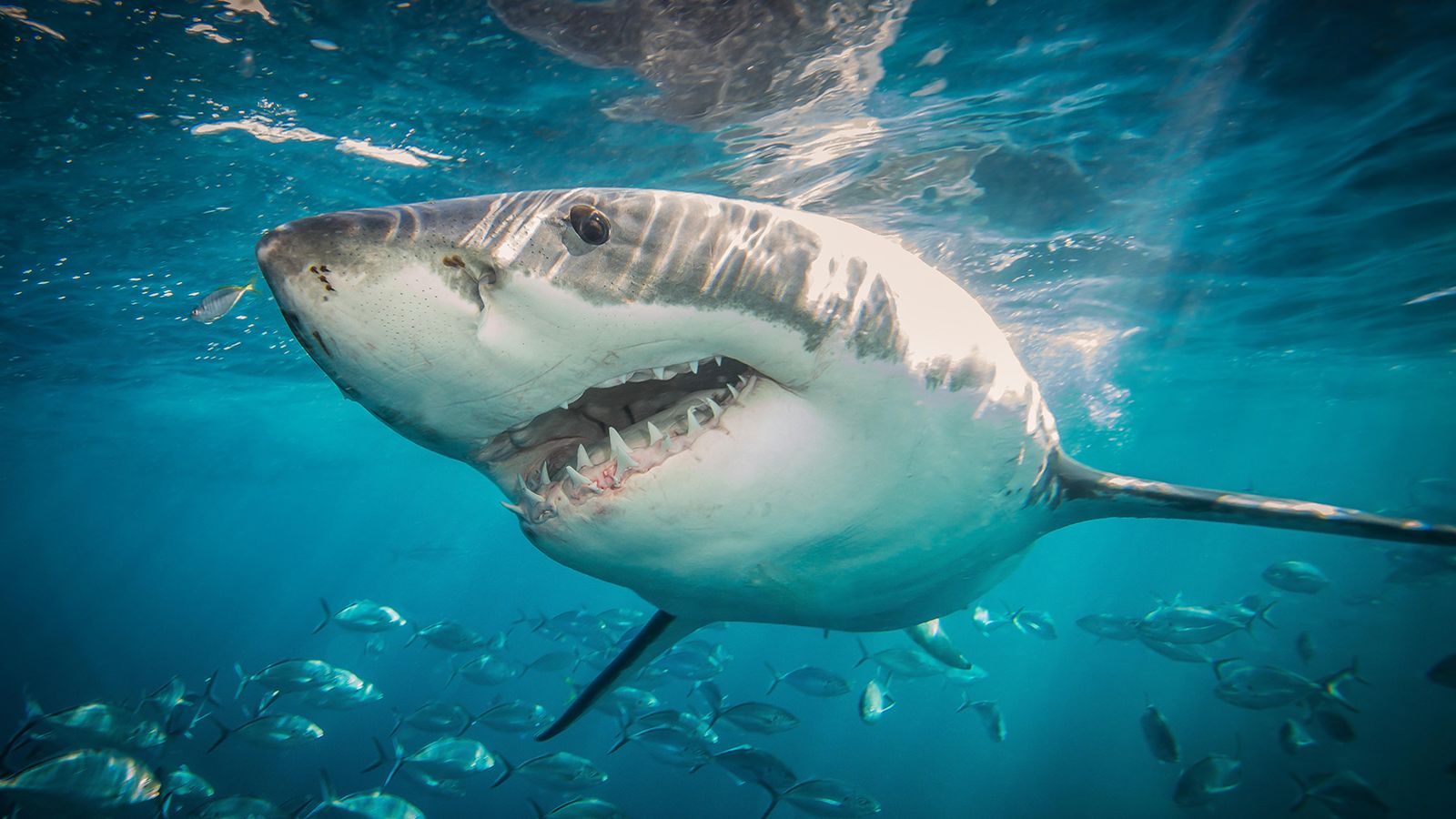(CNN) — It’s only natural that shark-related news stories begin to increase at this time of year. New York, for example, increased its patrols after five attacks were recorded in two days; At least 50 sharks were caught on camera on Long Island, and beachgoers spotted one shark swimming near a crowded Florida beach.
Despite our terrifying fascination with these majestic beasts of the sea, the odds of one of those needle-like teeth piercing your skin are extremely low: one in 4 million, according to the International Shark Attack File (ISAF), the world’s most comprehensive database of all known shark attacks.
The 35th official Shark Week runs July 23-29 on the Discovery Channel and seeks to increase conversation and education about these ancient marine predators that are vital to the ocean’s health. (Discovery Channel and CNN parent Warner Bros. share Discovery.)
Last year there were 57 unconfirmed shark attacks in a population of 8 billion, five of which were fatal. However, some parts of the world have higher rates of shark attacks than others, and the number has been increasing over the years.
Here are the places in the world with the highest shark attack rates between 2012 and 2021 and the reasons why they became hotspots.
Florida (259 bites)
According to ISAF statistics, if you’re looking for the best time, location and activity for a shark encounter, surf in Volusia County, Florida between 2pm and 3pm local time in September.
Home to the world-famous Daytona Beach, Volusia holds the dubious honor of being known as the “Shark Bite Capital of the World.” New Smyrna Beach, south of town, is a hotbed of shark activity.
Australia (143 bites)
In 2022, there were nine unprovoked incidents in Australia: four in New South Wales, four in Western Australia and one in Victoria.
Around the world, bite victims are often floating in the water on a surfboard, water ski, or some other device during an attack. “Try to avoid splashing on the surface because it makes sounds reminiscent of fish fighting,” says Gavin Naylor, director of the Florida Shark Research Program. Florida Museum Reference for Swimmers.
Hawaii (76 bites)
Maui is the second largest island in Hawaii and the liveliest when it comes to human-shark encounters. An important factor is the unique underwater landscape: Maui’s gently sloping island reef habitats are particularly attractive to tiger sharks.
Fishing is, unsurprisingly, another high-risk activity in shark-infested waters. In May 2023, a kayaker was fishing in the shallow waters off Windward Oahu, Hawaii, when a tiger shark collided with his boat.
South Africa (29 bites)
South Africa was the scene of 29 unprovoked shark bites between 2012 and 2021, six of which were fatal. The Western Cape, which includes Gansbaai Beach, has been the site of recent attacks. Gansbaai has traditionally been a spot for great white sharks, but in recent years they have been terrorized by orcas.
ISAF notes that it is very difficult to definitively identify the species involved in attacks, as victims are understandably disoriented in the heat of the attack, but great white sharks are among the most frequently implicated species.
South Carolina (45 bites)
None of the 45 unprovoked attacks in South Carolina over the past decade have been fatal. Charleston, Harriet, and Beaufort were the locations with the most incidents.
“If you go out to sea, whenever or wherever it is, you have to assume you’re going to encounter a shark,” Neil Hammerschlag, director of the Shark Research and Conservation Program at the University of Miami’s Rosenstiel School, told CNN for our story on surviving a shark attack. “Fortunately, humans are not on the menu and sharks tend to avoid people.”
California (29 bites)
San Diego is California’s shark bite hotspot, with 20 confirmed unprovoked shark attacks since 1926.
Although statistics show that attacks peak during summer afternoons due to the large number of people frolicking in the water, the real times to avoid are dawn and dusk. “Many shark attacks are cases of misidentification, due to poor visibility and identification skills on behalf of the shark,” Richard Pearce, an author, shark expert and former president of the UK-based Shark Trust and Shark Conservation Society, told CNN.
The great white shark is one of the most feared sea creatures, but it also preys on orcas. (Brad Liu/Alamy Stock Photo)
North Carolina (31 bites)
Brunswick County, in the southeastern corner of North Carolina, is full of beaches, so it’s no surprise that it’s the region with the highest number of recorded attacks: 17 of them since 1935.
North Carolina’s coastal waters are an important migration route for marine species, writes Chuck Bankley of the North Carolina Marine Grant. “Coastal Watch”That means most species of sharks that live on the East Coast of the United States pass through here at some point during the year.
Reunion Island (19 bites)
Located between Madagascar and Mauritius in the Indian Ocean, Reunion is a volcanic rainforest island teeming with wildlife, including the many sharks that surround its crystal blue shores.
Between 2012 and 2021, there were eight fatal attacks, meaning that by some measures the island is one of the most dangerous places on Earth in terms of shark encounters. Geography plays its part: Reunion Island sits on the so-called “shark highway” between the shark-infested waters of Australia and South Africa, meaning that even adventurers in the Indian Ocean can open the front porch door and walk straight into the sharks’ living room.
Brazil (10 bites)
The state of Pernambuco in northeastern Brazil is home to the bustling coastline of Boa Viagem and the Fernando de Noronha archipelago of 21 islands and islets. And it has six times more shark encounters than anywhere else in the country. In an April 2023 study in the International Journal of Oceanography and Aquaculture, local government “seeks to fund scientific research to investigate the high number of unprovoked shark attacks. [que] Since the 1990s, it has suddenly started to be recorded in the coastal waters of Pernambuco.
Bahamas (5 bites)
Nurse sharks are a docile, non-aggressive species, which means swimming with them is a popular tourist activity in the Bahamas. However, they are large, growing up to 14 feet long (about 4.20 meters) and, as you would expect in the wild, attacks are very rare.
Instagram model Katarina Zarutsky swam with them at Staniel Cay in 2018 when one of them gripped her hand with its strong jaws. “All of a sudden it felt like 15 people were squeezing my wrist very, very, very hard,” Zarutsky told CNN. “The next thing I knew, I was under water.”





